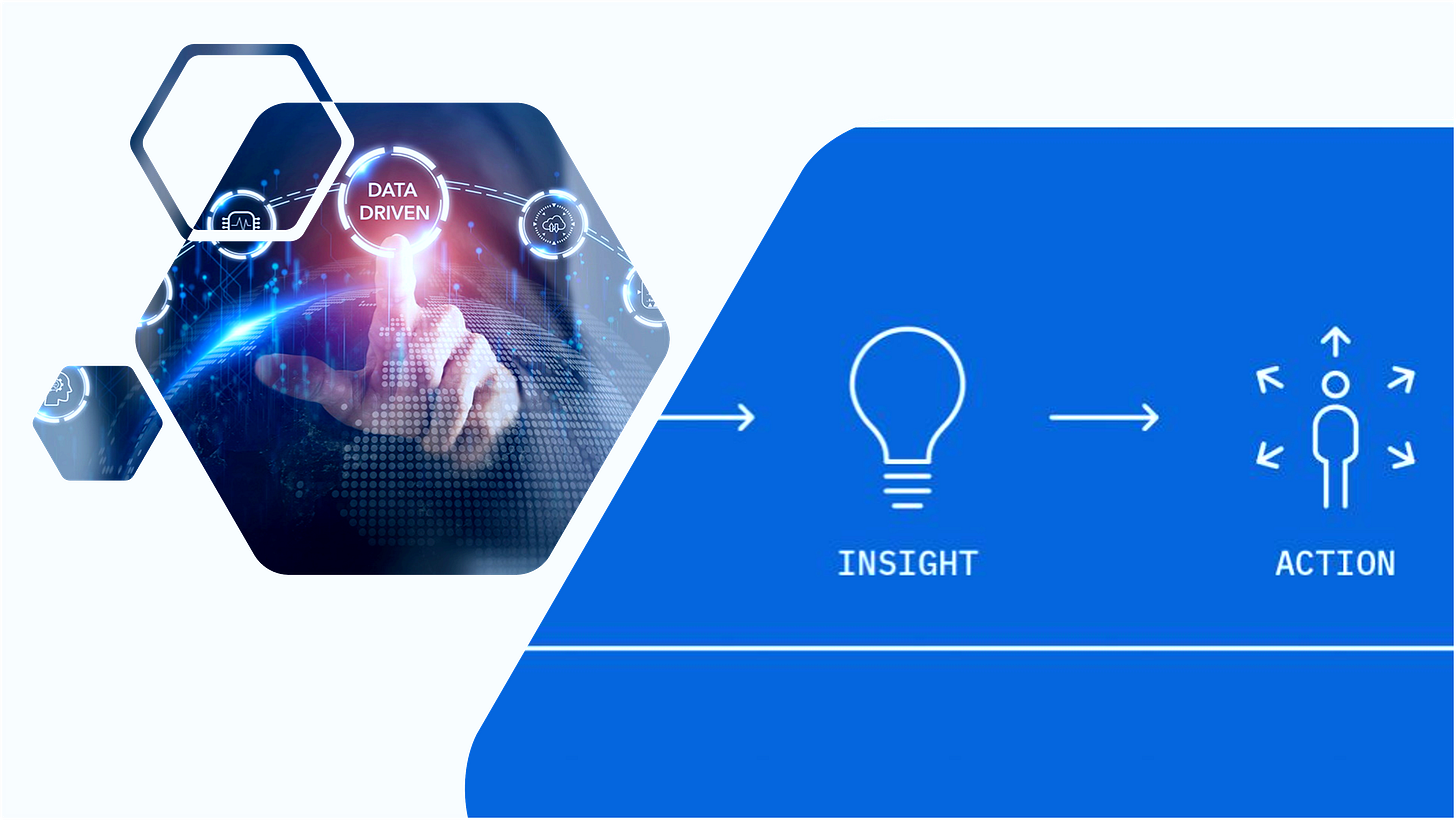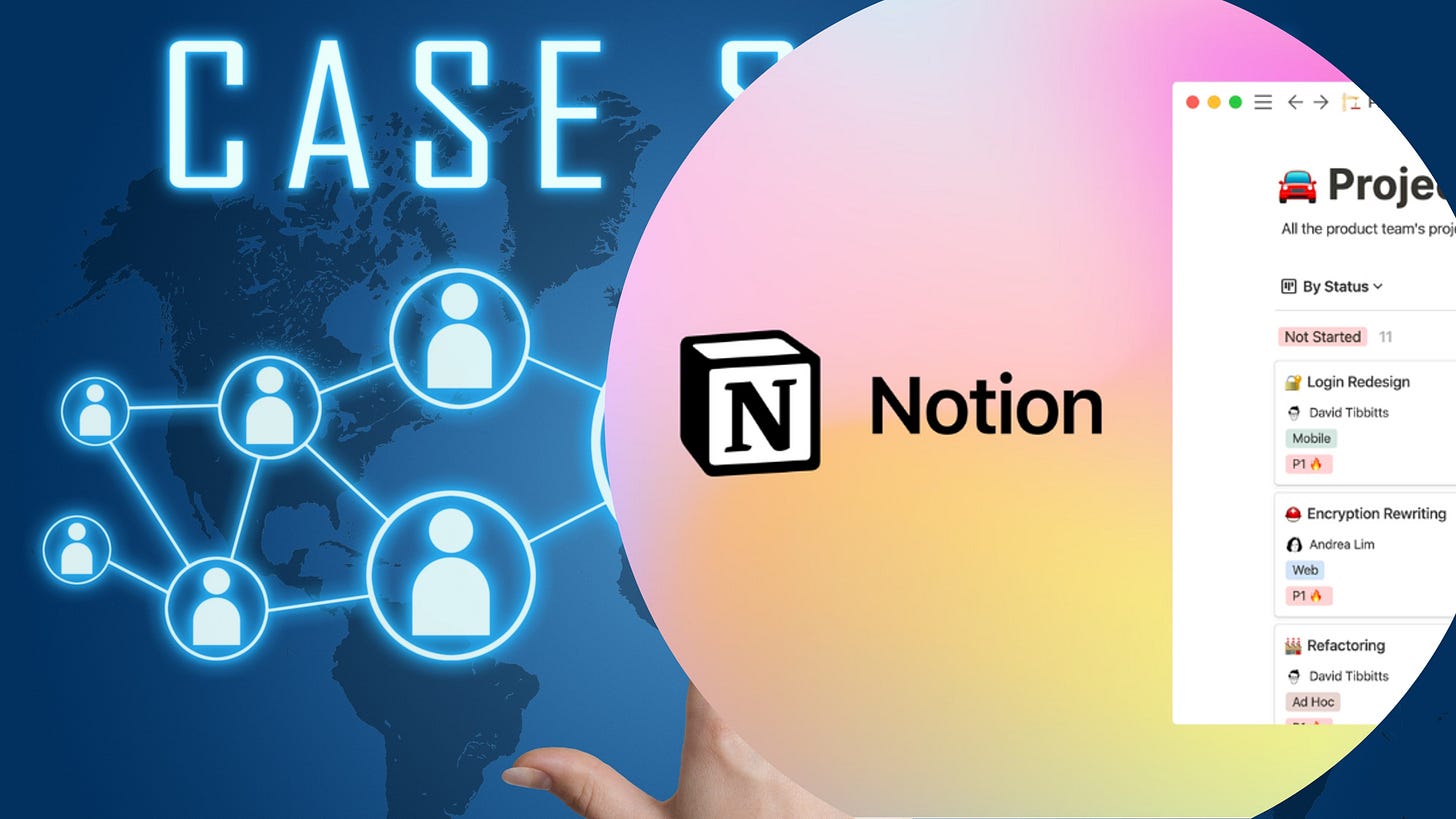Scaling Smart: The Data-Driven Approach to Business Growth
How smart businesses turn insight into advantage—and scale without the chaos
Welcome back to The Business Growth Blueprint!
Let me start with a quick story.
A few years ago, I met a founder who scaled his startup from five to fifty employees in under a year. It was a rocket ship—until it wasn’t. Customer complaints spiked, onboarding broke down, and morale took a nosedive. "We were growing, but we had no idea if it was the right kind of growth," he told me. "We were flying blind."
That story stuck with me. Because for every company chasing hypergrowth, there’s a real risk of scaling wrong. And that’s what today’s issue is all about: how to grow intentionally, using data not as a buzzword—but as a business discipline.
Why Data-Driven Scaling Matters
Scaling isn't just about doing more. It’s about doing more of the right things. And that’s where data becomes your best ally.
When you're growing fast, there’s always the temptation to move on instinct—to hire quickly, to launch without testing, to double your ad budget because growth feels good. But without data to guide your decisions, that momentum can send you in the wrong direction. Take Webvan, for example—a grocery delivery startup that expanded aggressively without validating its business model or understanding customer behavior at scale. Despite initial excitement and over $800 million in funding, the company collapsed, proving that momentum without insight is a recipe for disaster. George Shaheen, the briefly appointed CEO of Webvan, previously served as the CEO of Andersen Consulting, where he earned $4 million annually. Upon joining Webvan, his agreement stipulated that he would receive 50% of his salary for the rest of his life, amounting to $375,000 per year. He continues to receive this payment to this day!
A data-driven approach helps businesses:
✔️ Prioritize high-ROI activities
✔️ Spot issues before they become fires
✔️ Understand what customers actually do—not just what they say
✔️ Align resources with what’s working
✔️ Avoid classic traps like bloated teams or chasing shiny objects
Common Growth Traps to Avoid
Let’s talk about some of the missteps I’ve seen again and again—ones that quietly eat away at momentum as companies scale.
First, there’s gut-driven expansion—those moments when leaders make big moves based on hunches instead of hard data. It might feel bold in the moment, but without validation, it can lead to wasted resources and missed opportunities.
Then there's overcomplication. As businesses grow, it’s tempting to throw new tools, technology, new roles, and new processes at every problem. But before long, teams are tangled in a mess of overlapping responsibilities and unclear priorities. My guess is many of you have experienced this.
Vanity metrics are another trap. It’s easy to get excited about a spike in website traffic or a jump in followers, but those numbers don’t always correlate with revenue or retention. What really matters? Metrics like LTV, CAC, churn, engagement and simply profitable growth.
And finally, there’s the failure to iterate. Too many teams treat their initial growth playbook like gospel—resisting change even when the data says it’s time to pivot. Smart scaling requires a willingness to evolve, to test, and to improve. There is no such thing as status quo.
The Power of Operational Intelligence
Let’s be honest—data can sound intimidating. But the truth is, operational intelligence just means paying attention to what’s really going on inside your business and using those insights to make smarter moves.
When scaling, it's easy to rely on gut feel or hustle your way through decisions. But smart operators use data like a compass, not a crutch. It’s not about drowning in reports—it’s about asking the right questions and using the answers to make clear-headed calls.
For example, instead of guessing what next quarter might look like, they use strategic forecasting—grounding their plans in real numbers and trends. Rather than trying to serve everyone, they tap into segmented insights to find out who their best customers are and how to bring in more like them. And when growth feels stuck, they don’t panic—they use process analytics to dig into workflows and spot where things are getting jammed.
The result? Fewer surprises. Better decisions. And growth that’s built on substance, not scramble.
The Data-to-Decision Flywheel
Behind every thriving business is a rhythm—a way of making decisions that’s repeatable, grounded, and surprisingly simple. That rhythm is what I, and others, call the Data-to-Decision Flywheel. This is essentially a term popularized by Jim Collins in his 2001 book Good to Great.
It starts with Collect—because growth without inputs is just guessing. Smart businesses gather data from every corner, including sales calls, support tickets, customer behavior, and market signals. They don’t wait for perfect data; they start with what they have and refine as they go. Collection can be a challenge, as data ownership may reside in different parts of the organization.
Next comes Analyze—but not just crunching numbers. This is about translating raw information into meaningful patterns. Where are customers dropping off? What offers actually convert? What’s lagging in the funnel? This step turns noise into insight. This is where I see clients/customers run into trouble: (1) their data is not clean, (2) they misinterpret the data, or (3) they spend too long in analysis.
Then there’s Decide. This is where too many teams freeze. However, the best operators trust what the data reveals—even when it contradicts their assumptions. They use insights to make clear and informed decisions. No waffling. The challenge here is ensuring that decisions are based on reality. As an example, a mid-sized industrial company was convinced that their delivery was exceptional, but the data showed they were actually losing clients. They did nothing, ignoring the obvious. You can imagine the result.
Act is where it gets real. The best strategy in the world is worthless if it doesn’t translate into action. Whether that’s launching a new feature, adjusting pricing, or tweaking onboarding flows—decisions must turn into movement.
And finally, Repeat. Because growth isn’t a one-time sprint—it’s a cycle. With every loop, the flywheel gains momentum. The questions get sharper. The moves get smarter. The results get better.
That’s the beauty of this system. It’s not just a way to scale—it’s a way to keep scaling.
Real-World Example: How Notion Scaled Using Data
Notion’s growth story isn’t just impressive—it’s instructive. While many startups invest heavily in paid ads and hope something sticks, Notion, a productivity software company founded in 2013, took a different approach: they listened to the data.
Instead of guessing what would drive adoption, they looked closely at what their most passionate users were already doing. Power users weren’t just writing notes—they were building entire workflows, sharing templates, and pulling teammates in. That’s where the magic was happening.
So rather than chasing new customer segments or splashy campaigns, Notion doubled down on those behaviors. They developed features that facilitated collaboration. They amplified the template ecosystem. And they leaned hard into community, empowering users to grow the brand organically.
The result? Explosive, sustainable growth—and a user base that not only loved the product but evangelized it. Notion’s valuation in 2024 was a staggering $10 billion!
Other Data-Driven Standouts
Of course, Notion isn't the only one getting it right. Many companies—both large and small—are leveraging the power of data to scale smarter, not just faster. These aren’t hypothetical case studies or overly polished marketing stories. They’re real examples of how insights, when put into action, create measurable results. Here are a few that stand out:
Walmart used store + weather data to stock smarter—and increased online sales by 15%.
Starbucks personalized offers based on loyalty data, growing membership by 20% and increasing visit frequency by 15%.
Narellan Pools ran hyper-targeted ads based on heatwave patterns, boosting sales by 23% with reduced ad spend.
eBay Sellers who used analytics tools saw weekly sales jump by as much as 12%.
The 5 Pillars of Smart Scaling Using Data
Think of these pillars as your tactical blueprint—the five foundational areas where data and action align to power sustainable growth. Each one builds on the others, and together, they keep your business sharp, focused, and ready to scale without losing control.
1. Strategic Forecasting – Don’t just plan; anticipate. Use historical data, market trends, and leading indicators to model where you're headed—and spot potential roadblocks before they hit. Do not ignore historical trends as “noise”. I’ve seen too many companies plan for a revenue explosion that doesn't align with market realities. The result: missed revenue objectives.
2. Segmented Insights – Not all customers are created equal. Identify your high-value segments, understand their needs, and learn how to better serve them. Let your best-fit customers guide your product, messaging, and support.
3. Process Analytics – Where are things breaking down? Whether it’s your sales funnel, delivery pipeline, or onboarding experience, mapping actual workflows with data helps you eliminate friction and improve efficiency.
4. Customer-Centric KPIs – Focus on the numbers that reflect value and experience: lifetime value (LTV), customer acquisition cost (CAC), churn rate, and Net Promoter Score (NPS). These aren’t just metrics—they’re growth signals.
5. Iterative Execution – Growth isn’t one big bet. It’s dozens of small experiments. Build, measure, learn, adjust. Then repeat. Treat every campaign, product change, or process tweak as an opportunity to learn from.
Implement these five pillars, and you’ll stop reacting—and start scaling with clarity, intention, and momentum.
Final Thoughts: Scale With Intent
Scaling fast is exciting. Scaling smart is sustainable. And the difference often comes down to one thing: discipline.
Not the rigid kind—but the kind rooted in clarity, intention, and focus. It’s the discipline to say, “Let’s test that first.” The discipline to measure before you move. And the discipline to tune into what the data is telling you, even when it’s uncomfortable.
Because the truth is, growth isn’t about doing everything. It’s about doing the right things, at the right time, in the right way. Data doesn’t kill creativity—it amplifies it. It keeps your instincts honest and your team aligned.
As you build, scale, and grow, don’t chase noise. Build the flywheel. Run the tests. Ask the hard questions. Use the signals. And always come back to: what is this data telling us that our ego might be missing?
Smart growth is intentional. And in today’s market, intentionality is a superpower.
Up next: Integrating Generative AI into Business Strategy: Opportunities and Challenges — How modern businesses are leveraging AI to drive innovation, enhance efficiency, and gain a competitive edge (without getting lost in the hype).
Until then: scale smart, stay curious, and keep learning.
—
Want to discuss? Let’s connect!
Sources:
IMD Business School, “How a Small Company Used Big Data to Increase Its Sales”
DigitalDefynd, “Top 10 Marketing Analytics Case Studies [2025]”
Rikkeisoft, “Data-Driven Business Strategy: Using Analytics to Drive Growth”
NBER, “Big Data Raises Small Businesses: eBay Experiment”
Walmart Case Study, “How Big Data Analysis Helped Increase Sales Turnover’




